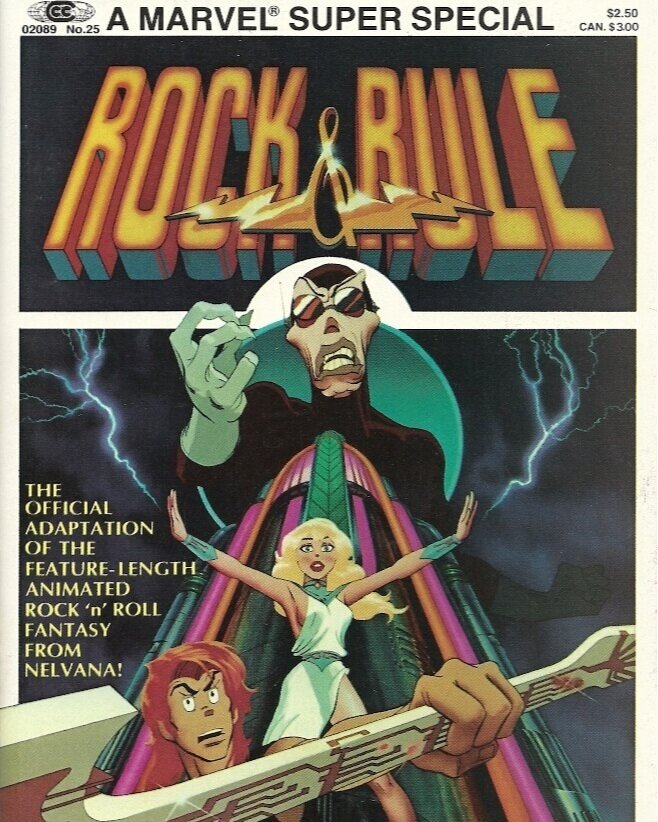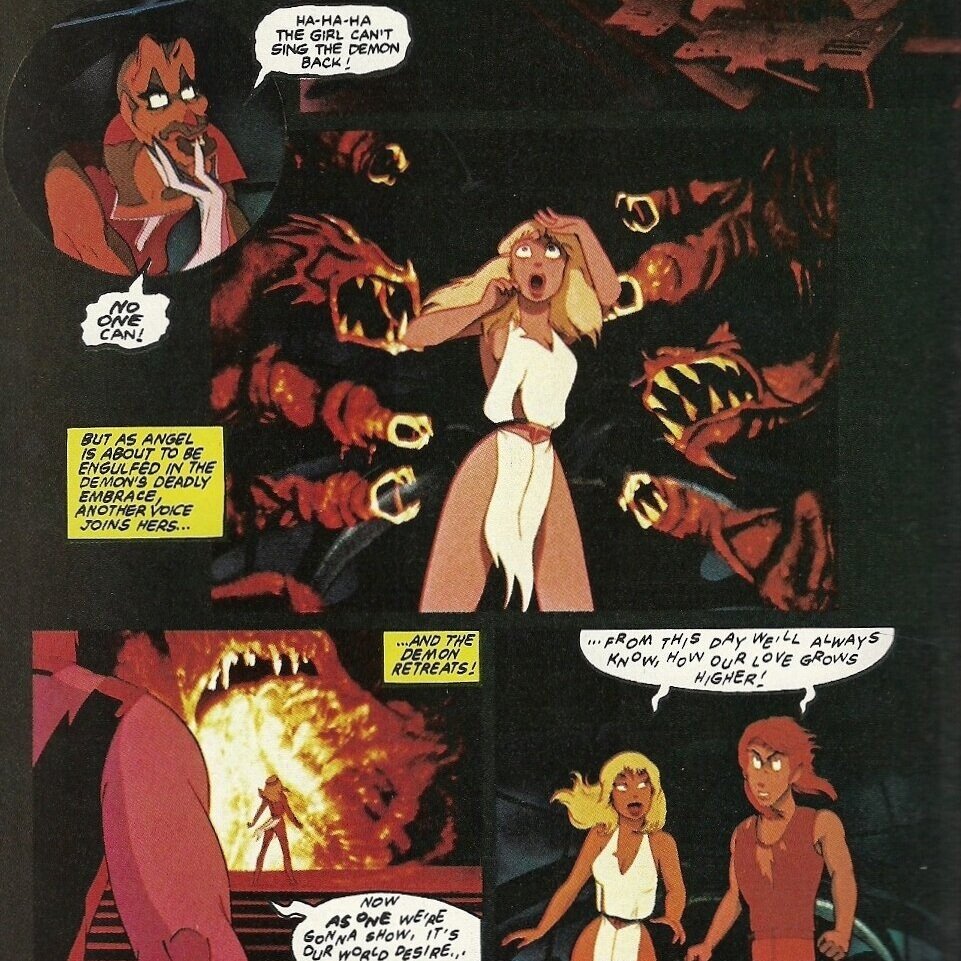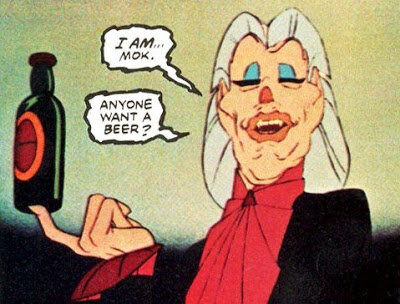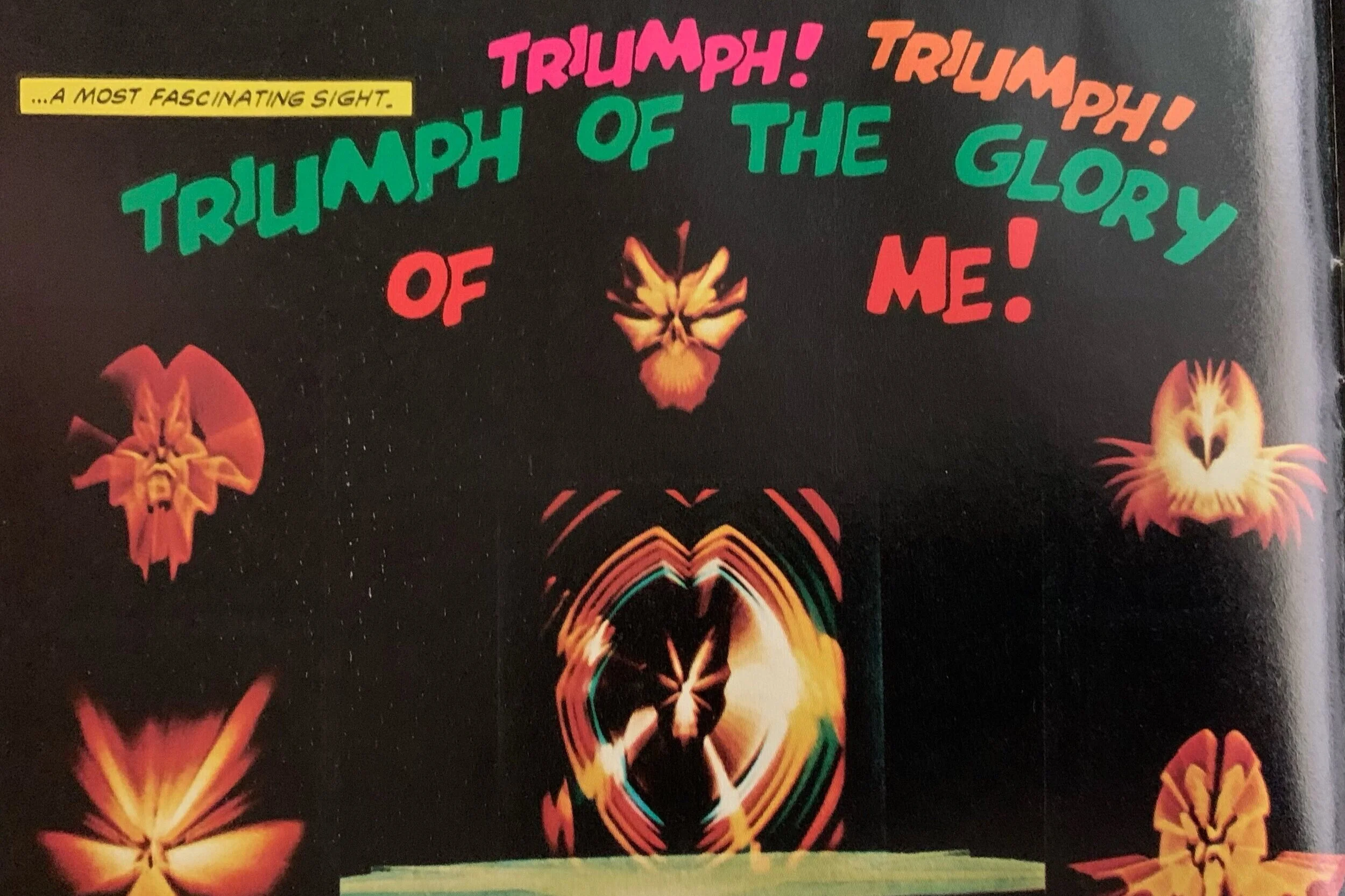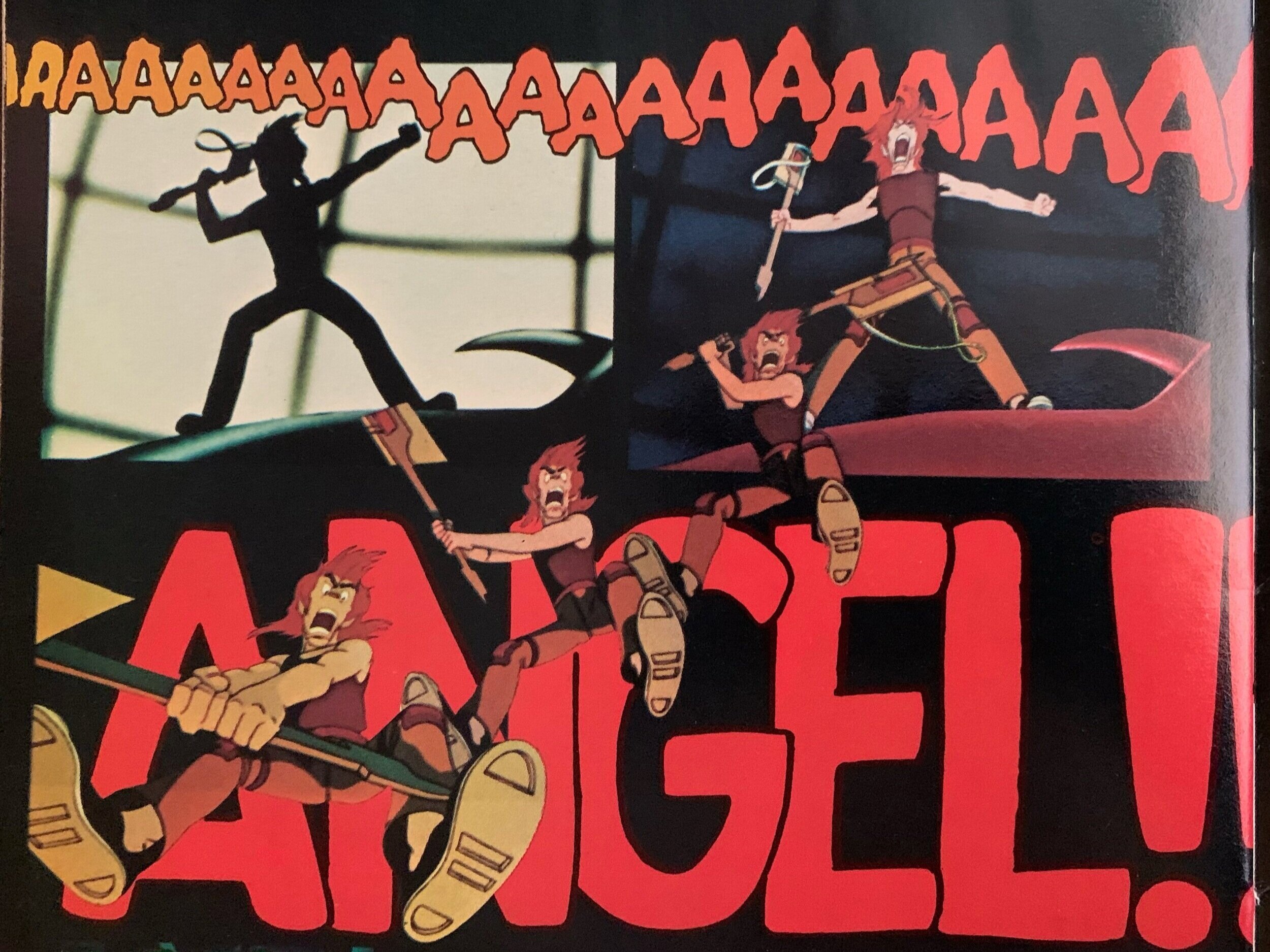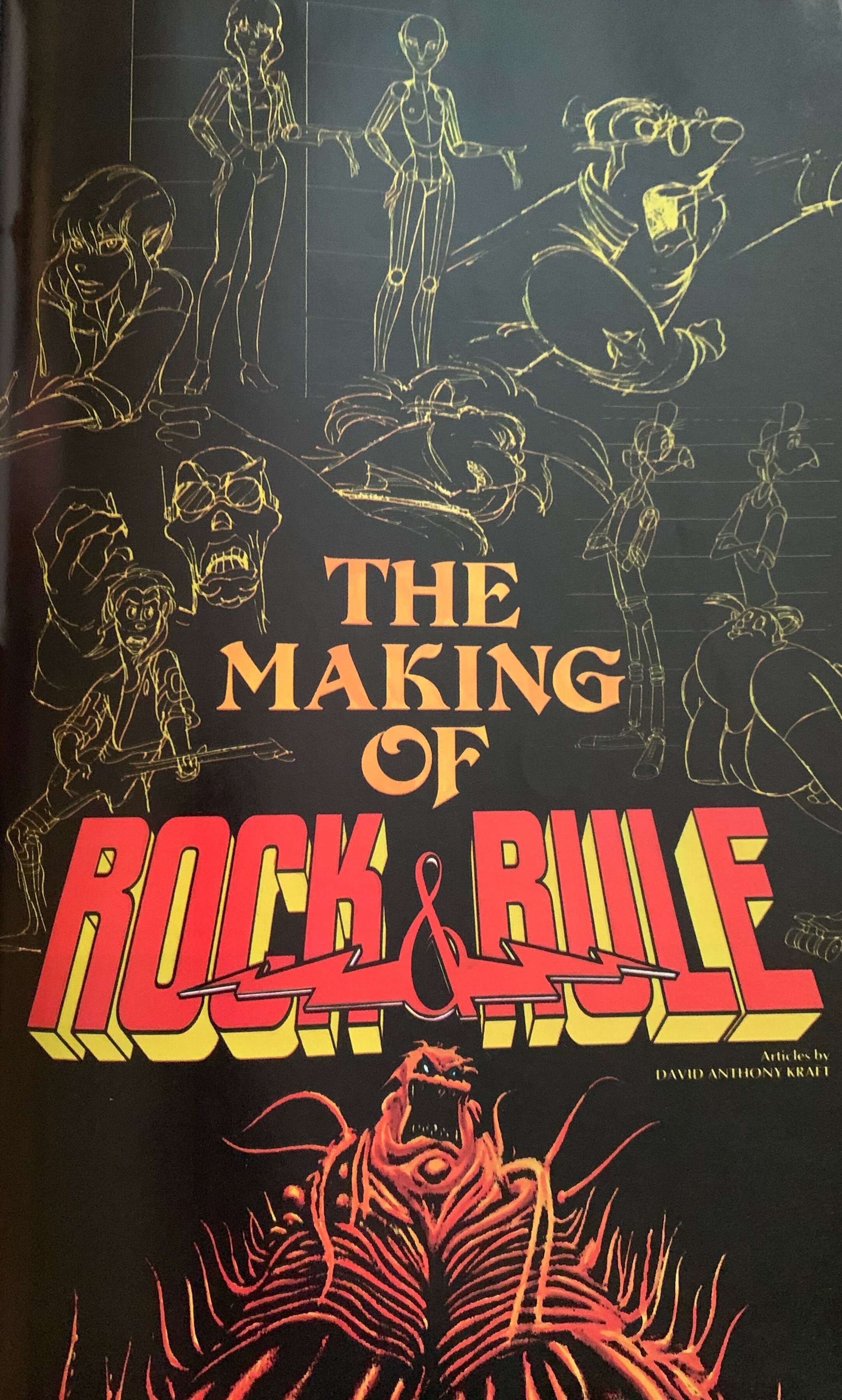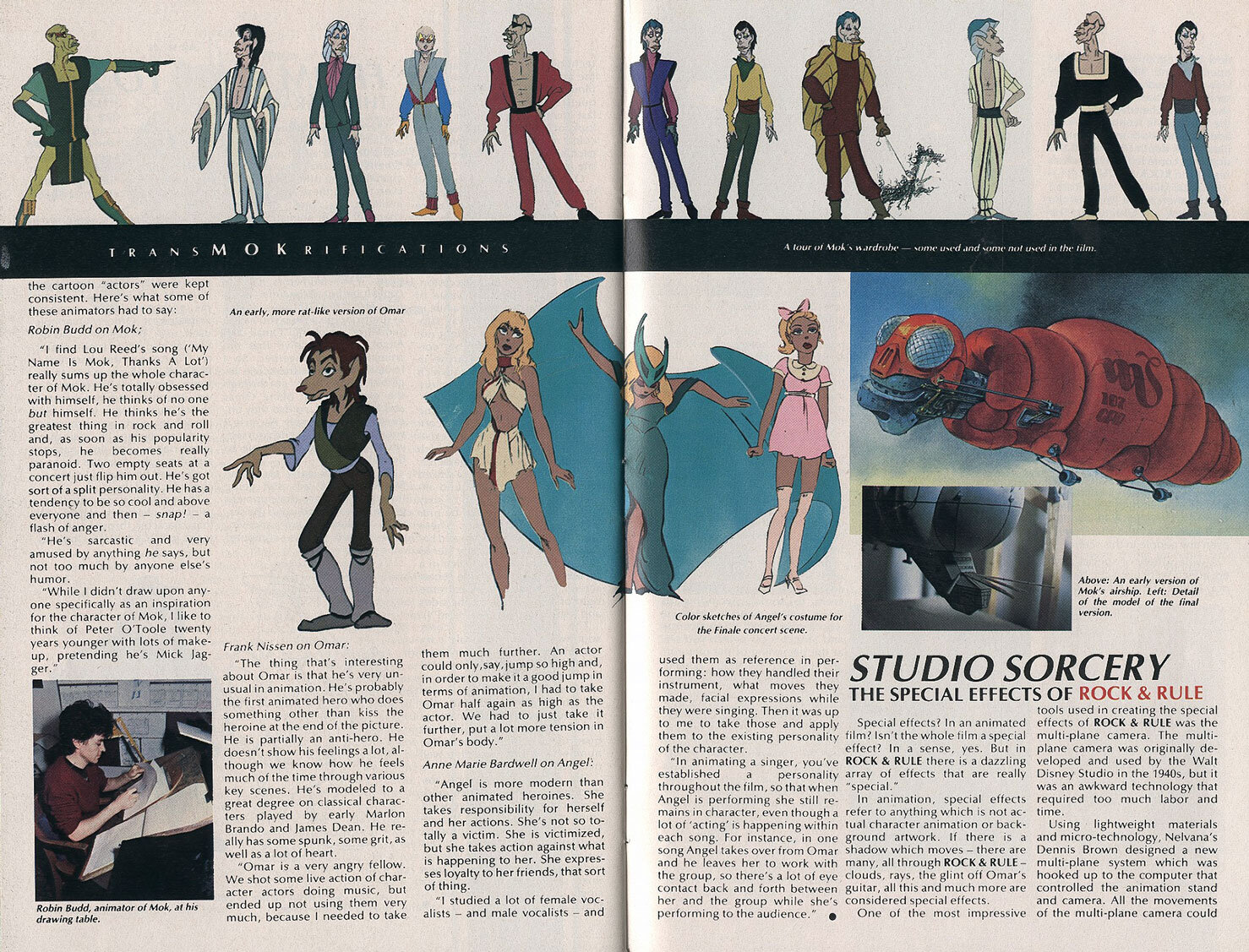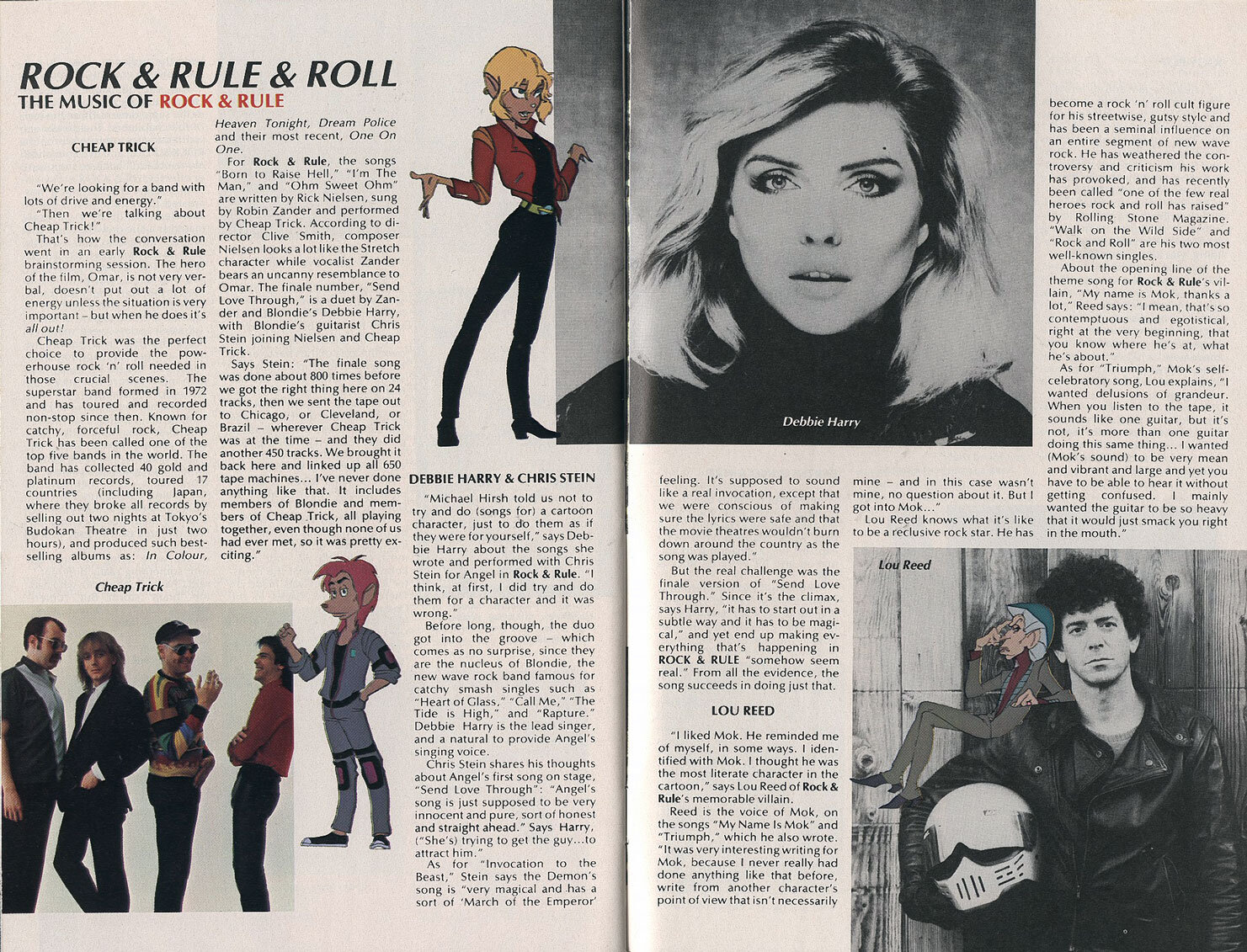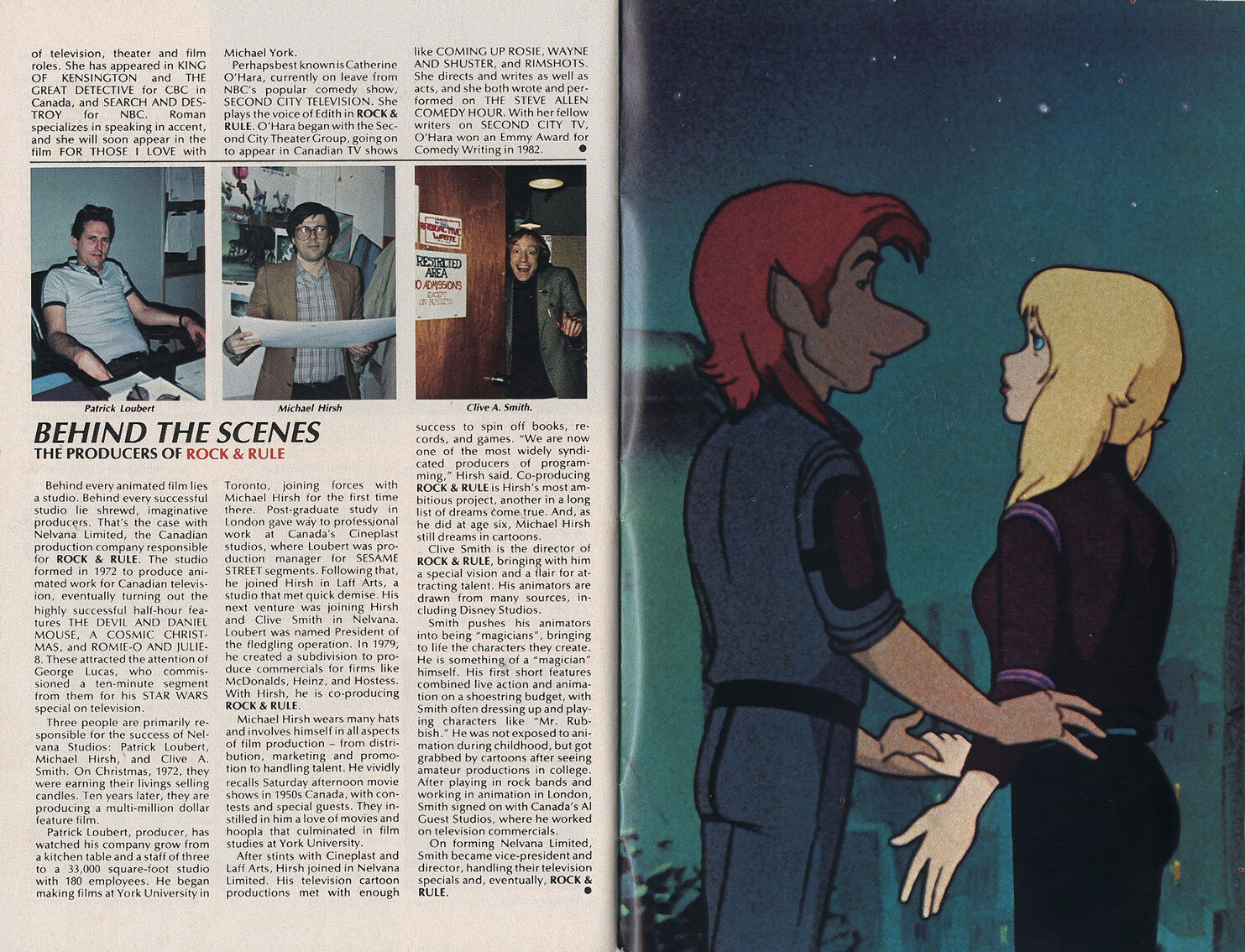ROCK & RULE (1983)
In 1983, there was a fantasy movie that was poised to set the world ablaze. A team of scrappy outsiders were going to fight the head of a major shadowy network; this fearsome villain possessed otherworldly powers and control of minions to carry out his brutal attacks. The film was filmed with monsters, memorable music, romance, and all set in a fantastical world that seemed at once futuristic but very closely to our own. That film, of course, was RETURN OF THE JEDI. The Canadian animated film ROCK & RULE was also released that year. Both got the Marvel Comics adaptation treatment, but we’ll only be discussing the latter.
It’s hard to pinpoint exactly when animation became synonymous with child audiences. Most likely it’s somehow due to Walt Disney, as so much of 20th Century entertainment was shaped by that company’s marketing innovations and wranglings with copyright law and more.
But for whatever reason, that medium has been relegated to kids. Today’s American animated blockbusters—by the likes of Pixar, Sony, and more—tend to have jokes or aspects designed to entertain children and adults, but the primary demographic being targeted is the younger set. Hence the wave of moichandising. There are notable exceptions of course: Ralph Bakshi’s repeated attempts to make more mature content; the critically beloved (French) FANTASTIC PLANET; even the recent THE SPINE OF NIGHT with its epic meditation on generational power struggles seems primed for teens and older. Then, of course, there’s the massive output from Japan and other countries that are hugely popular with people of all ages.
Still there was hope that a slightly older audience would grok to these animated films, like LIGHT YEARS (aka GANDAHAR), STARCHASER: THE LEGEND OF ORIN, and ROCK & RULE. The Canadian production’s big hook was borrowed from 1981’s HEAVY METAL—a raucous soundtrack full of recognizable acts that young people (but not too young) loved and would therefore come out to watch their songs play over (and sometimes played by) weird rat people pursued by a Lovecraftian/Faustian Mick Jagger caricature in a post-apocalyptic wasteland. That was not the case as it made very little money and, due to the musical acts all being on different labels, there wasn’t even a soundtrack to propel the movie to success. But still—there were high hopes for the film, directed by Clive Smith and written by Peter Sauder and John Halfpenny, and some marketing campaigns were underway. One of those endeavors? An adaptation as a “Marvel Super Special” that hit shelves in 1983 which we will look at today.
Right off the bat, there’s an issue with this concept. Not only was the soundtrack—including songs by Cheap Trick, Debbie Harry, Lou Reed, Iggy Pop, Earth Wind & Fire—the main hook for ROCK & RULE, but music plays an integral part to the narrative of the film. So a text-based interpretation where the songs are rendered through scraggly lettering can’t keep up with the central conceits of Smith’s movie. Obviously there’s been songs in written form before without music/melody to go along with it, relying on the rhyming scheme to produce a sense of timing (looking at you, Tom Bombadil). But ROCK & RULE is a story about music, often told through music, where musical accompaniment is a big part of the attraction. Removing those singular sounds of New Wave/Post Punk de-fangs much of the proceedings and turns the story into a pretty stale version of an overly familiar tale (more so).
Make it stand out
Whatever it is, the way you tell your story online can make all the difference.
And what is that story? Following an apocalyptic war, only various animals (mice, dogs, a few others) survived and evolved into man-like creatures. Civilization has managed to mostly rebuild their fairly dilapidated world, creating cities, night clubs, and even a pop music sensation in the form of Mok Swagger. But Mok’s star is fading so he seeks out a particular singing voice—but unlike Swan in PHANTOM OF THE PARADISE, this musical Svengali wants that songbird to unleash a demon from a Hell dimension to give Mok unlimited power and presumably rule the world (or at least make him popular again).
That voice happens to belong to Angel, lone female member of a rock band lead by Omar (her boyfriend), and filled out by Dizzy and Stretch. Angel wants to perform her song, a romantic pop song that isn’t like the group’s other material, but Omar is too controlling and insists on only playing his music (which, in the film, is Cheap Trick’s “Born To Raise Hell”).
Everyone at the club hates the music and the club empties out. But Angel asserts herself and starts playing her ballad, only making Omar angrier, but also attracting the attention of Mok, sitting in the shadows and finally discovering that particular pitch needed to summon his dark overlord. That’s the basic set up. Mok invites the band to his mansion, seducing them with hypnotic balls (basically drugs plus those orgasm metal balls from SLEEPER) and promises of fame, before stealing Angel for his own purposes.
Omar and the gang try to rescue Angel, dodging Mok’s dimwitted assistants, only to realize that Omar and Angel have to perform together in harmony to send the Beast back to its infernal home. One of the henchmen kills Mok, the band figures out how to blend the music of Debbie Harry and Cheap Trick, and the story ends.
Rock & Rule’s story is perfectly fine—it’s a blend of PHANTOM OF THE PARADISE, Akira (at that time, Otomo’s opus was only in manga form), and 1980’s THE APPLE. But those three great tastes are pretty bland together and made especially worse in comic book form. The comic is credited to writer (and creator of Rocket Raccoon and Cloak & Dagger) Bill Mantlo and letterer Michael Higgins. There is no artist/inker mentioned. This is because the vast majority of the Super Special are just isolated still frames from the animated movie. Other comic adaptations of films, usually live action, are still drawn with its own sense of flair even if it is aping the look of the production and actors. Rock & Rule’s Super Special is mostly devoid of any real personality because there isn’t much added by an artist. There are a few visual flourishes that involve lettering and breaking up multiple scenes into clever, interconnected panels.
What’s frustrating is that these handful of flourishes are really cool and engaging. They provide a vibrance to the world that the static stills simply cannot, which may be the best way of adapting and communicating that rock ‘n’ roll energy. A post-apocalyptic world with rat people playing rock while fighting an evil pop music sorcerer and his demon sounds dope. That description, while befuddling, would have everyone intrigued. The style of the animation, a sort of proto-Don Bluth by way of various Métal Hurlant artists, is an interesting way of subverting the anthropomorphic imagery of children’s animation to segue into a darker and more bizarre tale. Instead, translating the comic directly from those film frames makes it stilted and lifeless.
There is an added bonus in the back of Rock & Rule: A Marvel Super Special, in that there are multiple breakdowns of the design of the characters, the world, the music used, and the people behind the making of the film, ROCK & RULE. It’s nerdy ephemera, but since the movie is a cult classic, it may be of particular interest to enthusiasts.
There were a string of comic adaptations of movies in the ‘70s through the ‘90s (we’ll even get to some in this very space). Many of them actually done by Marvel, with results varying depending on the artists involved and the material from which they are working. Sometimes the writers and artists were working with the original screenplay, which is how Wedge Antilles shows up in the Star Wars comics and would have a generation of nerds swearing he was in A NEW HOPE. ROCK & RULE is a muddled movie and the translation to print was already hampered by removing one of its key components (music). But the minimal artistic flair and need to adhere to the plot and dialogue (especially since it has to correspond to the exact frames from the flair), makes the Rock & Rule comic book pretty unsuccessful.
It’s a fun look at a different time and a mostly failed attempt at crossing mediums. The back matter is one of those insightful tidbits that shows the gulf between the vision of a project and its final form, without any real sense of reality from the people involved.
I suggest the film’s cultists seek this out; it’s an odd piece of memorabilia that works alongside the odd piece of filmmaking that is ROCK & RULE. You can find fairly inexpensive copies on eBay and other places.
While a comic book adaptation wouldn’t catapult adults to take animation more seriously, a successful version of this could have stoked imaginations and fandoms that would eventually lead to greater success for the medium, especially considering the film version is not easy to find. Hopefully generations raised on anime, Pixar, The Simpsons, and more will lead to more experimental and mature animations. Until then, here’s some rat people singing a love ballad.


